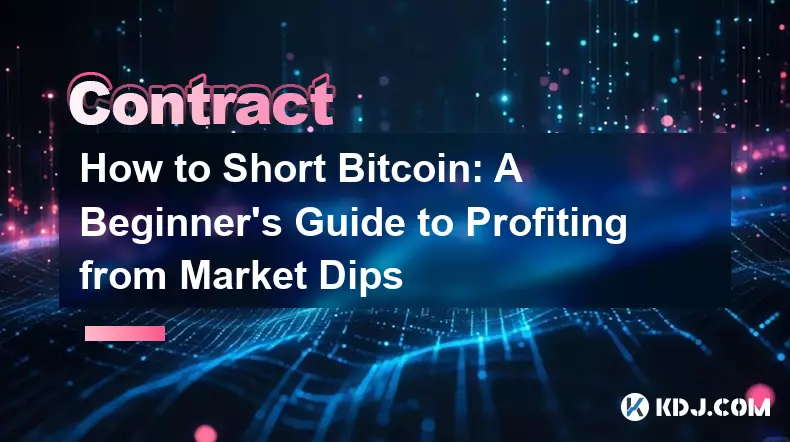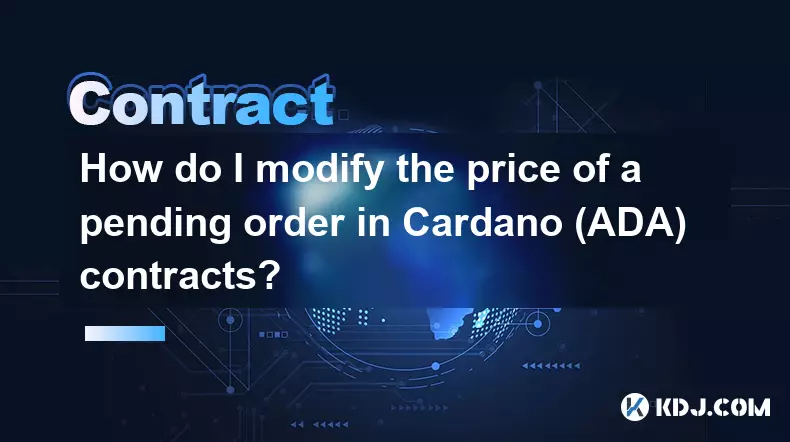-
 bitcoin
bitcoin $109667.069529 USD
-3.03% -
 ethereum
ethereum $3936.685804 USD
-4.07% -
 tether
tether $1.000493 USD
0.01% -
 xrp
xrp $2.771823 USD
-4.74% -
 bnb
bnb $957.805027 USD
-5.34% -
 solana
solana $196.735100 USD
-6.68% -
 usd-coin
usd-coin $0.999727 USD
-0.01% -
 dogecoin
dogecoin $0.227355 USD
-5.12% -
 tron
tron $0.335205 USD
-0.81% -
 cardano
cardano $0.779256 USD
-3.59% -
 ethena-usde
ethena-usde $0.999900 USD
-0.06% -
 hyperliquid
hyperliquid $42.492095 USD
-6.61% -
 chainlink
chainlink $20.501853 USD
-4.34% -
 avalanche
avalanche $28.952606 USD
-11.21% -
 stellar
stellar $0.356038 USD
-3.93%
How to Short Bitcoin: A Beginner's Guide to Profiting from Market Dips
Shorting Bitcoin involves borrowing and selling BTC to profit from price declines, but carries high risk due to unlimited loss potential and liquidation hazards.
Sep 10, 2025 at 03:54 am

Understanding the Basics of Shorting Bitcoin
1. Shorting Bitcoin involves borrowing BTC and selling it at the current market price with the intention of buying it back later at a lower price. The difference between the sell and buy prices represents the profit, minus fees and interest. This strategy is commonly used when traders anticipate a decline in Bitcoin’s value.
2. To initiate a short position, traders typically use a cryptocurrency exchange that supports margin trading or derivatives like futures and perpetual contracts. These platforms allow users to open short positions using leverage, which amplifies both potential gains and risks.
3. It’s crucial to understand that shorting is inherently riskier than buying Bitcoin, as losses can exceed the initial investment if the price rises significantly. Unlike buying, where the maximum loss is limited to the amount invested, shorting exposes traders to theoretically unlimited losses since there's no upper limit to how high Bitcoin’s price can go.
4. Most exchanges require collateral in the form of stablecoins or other cryptocurrencies to open a leveraged short position. This collateral acts as a buffer against adverse price movements. If the market moves against the position beyond a certain threshold, the exchange may liquidate the position to cover the debt.
5. Traders should familiarize themselves with key terms such as maintenance margin, liquidation price, and funding rates—especially when dealing with perpetual contracts. Misunderstanding these can lead to unexpected losses even if the overall market direction is correctly predicted.
Popular Methods to Short Bitcoin
1. One common method is using futures contracts on exchanges like Binance, Bybit, or OKX. These platforms offer Bitcoin futures with varying leverage options, allowing traders to short with as little as 5x or as much as 100x leverage depending on the platform and account tier.
2. Another approach is through perpetual swaps, which are similar to futures but do not have an expiration date. These contracts include periodic funding payments, where traders either pay or receive fees based on the difference between the contract price and the spot price of Bitcoin.
3. Some decentralized exchanges (DEXs) such as dYdX or Kwenta also allow users to short Bitcoin using synthetic assets or leveraged tokens. These platforms operate on blockchain networks and offer non-custodial trading, meaning users retain control of their funds.
4. Margin trading on centralized exchanges enables users to borrow Bitcoin directly and sell it on the spot market. Once the price drops, they repurchase the BTC to return the loan and keep the difference. This method often comes with interest charges on the borrowed amount.
5. Options trading is another advanced method, where traders can buy put options that give them the right—but not the obligation—to sell Bitcoin at a predetermined price before expiration. This limits risk to the premium paid, making it a safer alternative for beginners.
Risks and Risk Management Strategies
1. The most significant risk in shorting Bitcoin is a sharp price rally, often triggered by macroeconomic news, regulatory developments, or large institutional adoption. Such rallies can lead to rapid liquidations, especially for highly leveraged positions.
2. Volatility in the crypto market means that even well-reasoned short positions can be wiped out in minutes due to sudden price spikes. Traders must be prepared for extreme price swings and avoid over-leveraging their positions.
3. Funding rates in perpetual contracts can accumulate over time, eating into profits or increasing losses during prolonged bearish trends. Long-term short positions require careful monitoring of these costs.
4. Using stop-loss orders is a fundamental risk management tool. Placing a stop-loss at a strategic level helps limit downside exposure by automatically closing the position if the price moves beyond a tolerable threshold.
5. Diversifying short strategies across different instruments—such as combining futures with put options—can reduce reliance on a single method and improve overall risk-adjusted returns.
Frequently Asked Questions
What happens if my short position gets liquidated?When the price of Bitcoin rises sharply and your collateral falls below the maintenance margin, the exchange automatically closes your position to prevent further losses. You lose the collateral used to open the trade, and any open funding obligations are settled.
Can I short Bitcoin without using leverage?Yes, some platforms allow unleveraged shorting through mechanisms like borrowing BTC and selling it on the spot market. However, this requires holding sufficient collateral and paying interest on the borrowed coins, making it less common than leveraged methods.
Are there tax implications when shorting Bitcoin?Tax treatment varies by jurisdiction, but in many countries, profits from shorting are treated as capital gains. Losses may be deductible, but traders must keep detailed records of each transaction, including entry and exit prices, fees, and dates.
Is shorting Bitcoin legal?Shorting Bitcoin is legal on most major cryptocurrency exchanges and in most countries. However, certain jurisdictions may impose restrictions on derivatives trading or leverage usage, so traders should verify local regulations before engaging in short-selling activities.
Disclaimer:info@kdj.com
The information provided is not trading advice. kdj.com does not assume any responsibility for any investments made based on the information provided in this article. Cryptocurrencies are highly volatile and it is highly recommended that you invest with caution after thorough research!
If you believe that the content used on this website infringes your copyright, please contact us immediately (info@kdj.com) and we will delete it promptly.
- Riding the Crypto Wave: Ether Supercycle, Circle's Reversibility Debate, and Aster's DEX Surge
- 2025-09-27 02:45:12
- Shiba Inu's ETF Dreams: Navigating US Market Conditions
- 2025-09-27 03:05:12
- Dogecoin's Wild Ride: From Mining Moves to Meme Coin Mania – Can DOGE See 70x Growth?
- 2025-09-27 03:05:12
- Solana, Ruvi AI, and Institutional Backing: Navigating the Crypto Landscape
- 2025-09-27 02:25:16
- Momentum, Yield Campaigns, and Liquidity Expansion: Decoding the Latest Trends
- 2025-09-27 03:45:13
- Quant, CBDCs, and Crypto: Decoding the Future of Finance, Ya Heard?
- 2025-09-27 02:45:12
Related knowledge

How do I enable the "scalping-only" mode for Cardano (ADA) contracts?
Sep 24,2025 at 03:19am
Understanding Scalping Strategies in Crypto Derivatives1. Scalping in cryptocurrency trading refers to executing multiple short-term trades within min...

What is the maximum position limit for Cardano (ADA) contracts?
Sep 23,2025 at 11:00pm
Understanding ADA Futures and Derivatives Market Structure1. Cardano (ADA) futures contracts are offered by several major cryptocurrency derivatives e...

What is the maker fee for Cardano (ADA) contracts?
Sep 26,2025 at 09:01am
Understanding Maker Fees in Cardano (ADA) Contracts1. The concept of maker fees applies broadly across decentralized exchanges and smart contract plat...

How can I view open interest in Cardano (ADA) contracts?
Sep 24,2025 at 07:36am
Understanding Open Interest in Cardano Derivatives1. Open interest refers to the total number of outstanding derivative contracts, such as futures or ...

How do I modify the price of a pending order in Cardano (ADA) contracts?
Sep 27,2025 at 01:00am
Understanding Pending Orders in Cardano Smart Contracts1. Cardano operates on a proof-of-stake blockchain that supports smart contracts through its Pl...

What is the function of the insurance fund in Cardano (ADA) contracts?
Sep 24,2025 at 02:18am
Understanding the Role of Insurance Funds in Cardano Smart Contracts1. The insurance fund within Cardano's ecosystem is not a native feature directly ...

How do I enable the "scalping-only" mode for Cardano (ADA) contracts?
Sep 24,2025 at 03:19am
Understanding Scalping Strategies in Crypto Derivatives1. Scalping in cryptocurrency trading refers to executing multiple short-term trades within min...

What is the maximum position limit for Cardano (ADA) contracts?
Sep 23,2025 at 11:00pm
Understanding ADA Futures and Derivatives Market Structure1. Cardano (ADA) futures contracts are offered by several major cryptocurrency derivatives e...

What is the maker fee for Cardano (ADA) contracts?
Sep 26,2025 at 09:01am
Understanding Maker Fees in Cardano (ADA) Contracts1. The concept of maker fees applies broadly across decentralized exchanges and smart contract plat...

How can I view open interest in Cardano (ADA) contracts?
Sep 24,2025 at 07:36am
Understanding Open Interest in Cardano Derivatives1. Open interest refers to the total number of outstanding derivative contracts, such as futures or ...

How do I modify the price of a pending order in Cardano (ADA) contracts?
Sep 27,2025 at 01:00am
Understanding Pending Orders in Cardano Smart Contracts1. Cardano operates on a proof-of-stake blockchain that supports smart contracts through its Pl...

What is the function of the insurance fund in Cardano (ADA) contracts?
Sep 24,2025 at 02:18am
Understanding the Role of Insurance Funds in Cardano Smart Contracts1. The insurance fund within Cardano's ecosystem is not a native feature directly ...
See all articles










































































